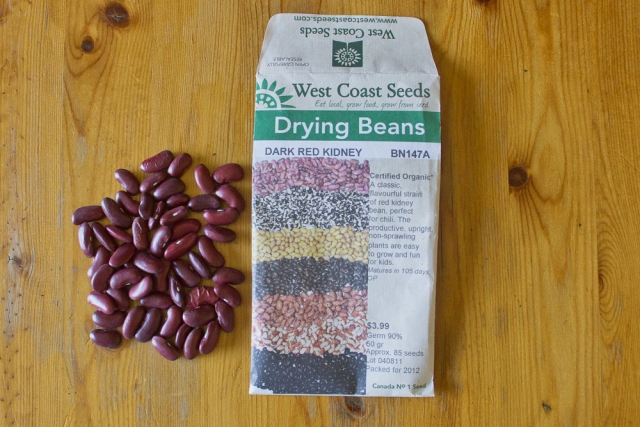GARDEN WISDOM: Bean Counting
Mid-May is an excellent time of year to plant drying bean seeds like red kidney beans, orca beans, or black turtle beans. These are all very productive crops, and the seeds are easy to extract and dry for use later in the year. Last year I planted an 8 foot row of kidney beans in one of the beds at Kirkland House in Ladner. I only used about half the package of seeds. I used, as I do with all my veggies, a small amount of Gaia Green’s All Purpose 4-4-4 organic fertilizer, but did not use a seed inoculant or any other method. We just kept the bed watered over the summer, and by August, the pods on the plants were beginning to dry and turn brown.
I picked all the pods from the plants, and spread them out on an old bedsheet in a spare bedroom at home. I ran an electric fan in the room, and turned the pods every day or so. The rest of the bean plants got composted. After only a few days, nearly all of the moisture had gone out of the pods, and they became easy to crack open in order to extract the seeds. The pods and chaff went into the compost, too. I kept the seeds drying in this same method for about 10 more days, until they were the size and texture of the ones I had started with.
From around 30 seeds, I ended up with well over a pound of seeds in the second year. And this begs the experiment of how many beans I would produce if all of year two’s seeds got planted. So they were. We’ve planted the whole amount into 2½ beds at the Holly Park community garden. This is simply an exercise in seed production. I don’t know what I’ll end up with, but I will post the results here in a few months.
All common bean plants (Phaseolus vulgaris) both bush and pole, are open pollinated – you’ll never find a hybrid bean listed in seed catalogues. This is because they are inbreeding plants with perfect, self-pollinating flowers. From time to time, bumblebees may carry pollen from one bean variety to another, and this will result in some off-type beans. You’ll open the pod and find five regular looking, red and white borlotti beans, and one that’s solid red. You can discard the solid red oddball bean if you plan on planting it again, or simply keep it and eat it with the rest of your beans.
If your purpose is to save seeds from your plants, never plant two white-seeded varieties side by side, as you won’t be able to remove any off-type seeds. If you are growing beans for seeds and really counting on genetic purity, you should isolate your crop from all other beans by 50 meters or around 150 feet.
— originally published at Garden Wisdom






















